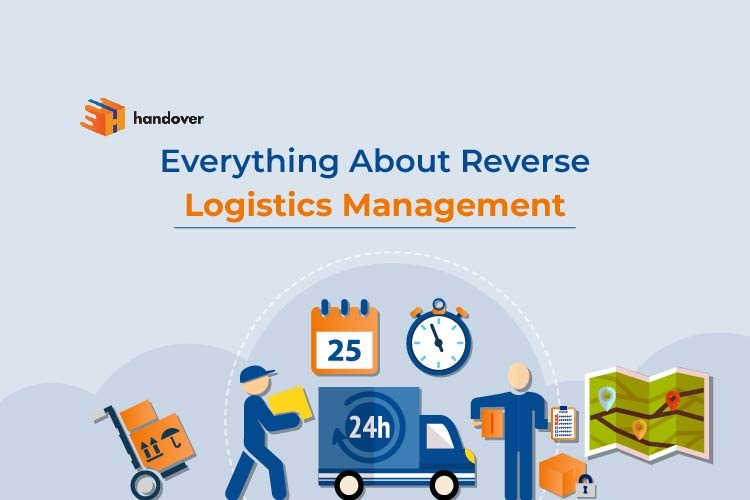Handover news
Blog
Everything About Reverse Logistics Management

Today, many customers order products in abundance. However, some products delivered are defective, so they get returned to retailers. In order to return these defective products to customers, logistics professionals must call businesses.
For instance, India’s e-commerce sector saw an annual growth of around 37% in 2022. The gross merchandise value (GMV) will likely touch $350 billion by 2027. But the return rate has been astonishing too! As per the data, the return rate for online shopping in India is estimated to be around 25-40%, higher than the global average. This poses a significant challenge for businesses as returns reduce their margins. Businesses include those seeking delivery services in Noida, Ghaziabad, Delhi, Bangalore, Mumbai and other cities of India.
Defining Reverse Logistics
Moving a product at least one step backward through the supply chain is known as reverse logistics. Customers may return a product for various reasons, including damage, flaws, or just a change of mind.
Reverse logistics management strategies can either waste money and resources or provide a chance to increase sales for businesses. Poorly designed and opaque return policies and procedures reduce customer loyalty and build distrust. However, smart, open, and optimised reverse logistics can increase customers’ lifetime value and loyalty.
Although there are various processes involved in reverse logistics, the core group is sometimes referred to as the 5 Rs: returns, reselling, repairs, remanufacturing, and recycling.
Return Management
Return management is the process of managing product returns. It includes various tasks such as inspecting returned goods, analysing whether they can be resold and arranging for their return to the supplier. For some companies, reselling is easier and also generates much revenue. Whereas, for a fashion industry, it is very difficult to resell returned products. Especially if it costs more to clean and restock than it would to dispose of them before creating a new one.
Reselling
Some products can come back to the shelf immediately or can be reintroduced to the market with certain modifications. Businesses have two options: either they adopt a procedure where returns are examined, tested and then resold, or they can sell products at discounts. When selling returned goods, businesses occasionally create a separate e-commerce channel. With this tactic, companies can provide discounts without risking their reputation.
Repair and Maintenance
Manufacturers and retailers provide repair and maintenance services for some high-profile accessories and expensive devices. These services can help increase the product’s shelf life. In some cases, the manufacturer or a third party undertakes repairs and maintenance for convenience and cost savings.
Remanufacturing or Refurbishment
This is the procedure for fixing or cleaning returned products so that they can be sold again. Either a manufacturer or a third party does this work. Firstly, remanufactured products are disassembled into parts and then reused to make new products. Customers often get electronics and other refurbished products as a replacement or at a discount if they return an item within the warranty term.
Recycle
Chips, metal and even fibres can be recycled and used to create new things. Copper, circuit boards and batteries can all be recycled from one electronic gadget. Textiles can be recycled to make paper, insulation, cloths, and stuffing for pillows and cushions.
Each of these reverse logistics categories can have a measurable impact on an organisation, including boosting profits and minimising losses.
How to Reduce Return for Businesses?
Many customers are choosing to buy clothes online instead of using the in-store experience. They often buy numerous items in various sizes or colours. However, customers often need to return these products because of defectiveness. To reduce the instances of product returns, retailers must take several measures before showcasing products online. The following are some of them.
- Ensuring updated, accurate and comprehensive product descriptions. These include demonstrating size, composition, handling guidelines, etc. Customers should be well aware of what they are buying.
- Provide a variety of product images. Businesses must make their products visible online. This will create a better idea of how the product actually appears.
- Charging customers to return something. This strategy does carry some risk because customers enjoy free shipping and simple return policies when choosing to order online. While some businesses do not charge customers who return their things in-store, they do charge them for returns of products online.
Conclusion
Customers often return their products when they are defective. This might cost businesses huge amounts of money. So, retailers must reduce these costs by offering fresh and clear products. As a business owner, if you have been searching for a credible delivery partner, contact handover. It helps businesses deliver a wide range of products to their customers.
